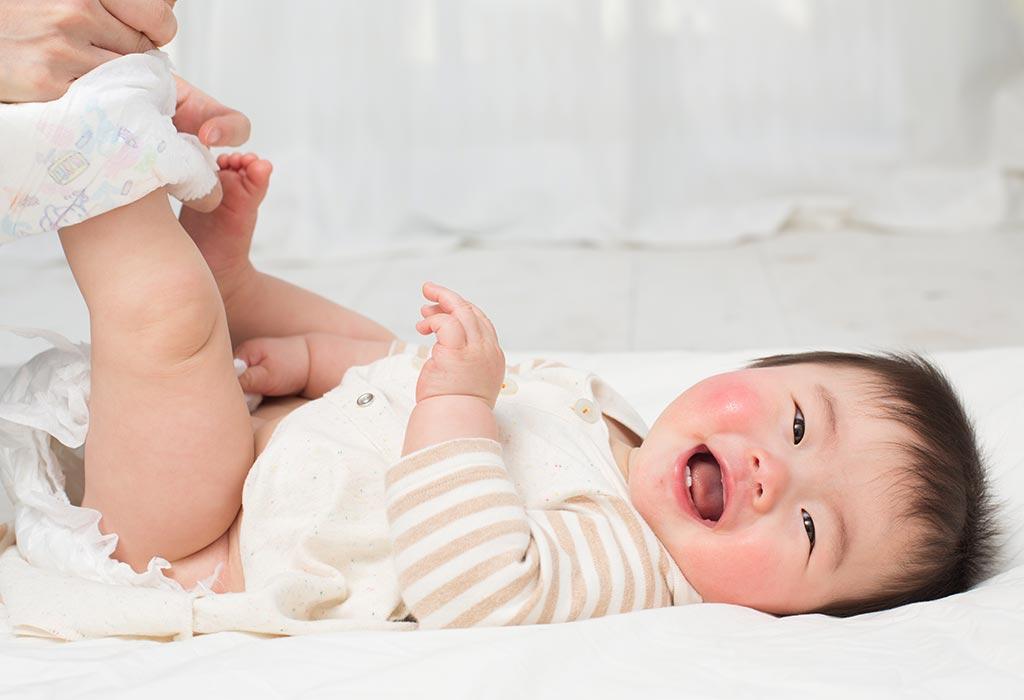Diaper Rashes
Symptoms, Causes, Treatment & Prevention
Diaper rashes are quite common in newborn babies, though they are more common when you introduce solid food to your baby’s diet. The diaper rashes appear on your baby’s bum in the form of red inflamed patches. They normally occur when you do not change wet diapers as frequently as you are supposed to, or when your baby’s skin is too sensitive.
Symptoms of Diaper Rashes:
- Uneven, sensitive skin appears on areas inside or surrounding the nappy – the buttocks, genital areas, thighs, and it sometimes even spreads to the lower back (your baby’s waist around which you fit the diaper).
- Your baby may cry or look uncomfortable when you touch or wash the bottom, especially during a nappy change.
What to do if your baby has Diaper Rashes?
Diaper rashes are pretty annoying – for the baby, and especially for the parents. Normally, the diaper rashes go away in a couple of days when you let the tiny bum enjoy some air (keep your baby diaper-free for some time), do frequent nappy changing, and apply ointment on the affected areas.
However, you need to consult a doctor if the diaper rashes continue to grow. Ask yourself these questions:
- Is it getting worse with time?
- Does the rash seem to be unusual or severe?
- Is there bleeding or pus?
- Does it cause more pain when the baby does pee and poop?
- Are there other symptoms too, like fever, or eczema on other parts of the body?
Treatment:
Your baby’s doctor may prescribe one or more of the following medications:
- A mild steroid cream (hydrocortisone).
- Oral or topical antibiotics if the doctor suspects your baby has any kind of bacterial infection.
- An anti-fungal ointment if the doctor suspects your baby has a fungal infection.
Only go for medications that the pediatrician recommends. Prolong usage of steroids is not good for the baby (or adult for that matter). Give those annoying rashes a day or two to heal. If you see no improvement even after a couple of days, talk to your doctor.
What causes diaper rashes?
Your baby can have these horrible diaper rashes due to one or more of the following reasons:
- Prolong exposure to feces and urine: If your baby is having diarrhea or frequent bowel movements, the sensitive skin at the bottom with experience rashes. Make sure when you or the nanny wipes the tiny bottom, the excretions from the skin folds are also properly cleaned).
- Something that mother has eaten: If your newborn baby is breastfed, he may get newborn rashes because of something that the mother has eaten. Also, if the mother is on antibiotics, the baby can have loose stools and hence rashes. Cruel world, right!
- Irritation from baby products: Your baby may be allergic to the type of baby wipes, oil, powder, or lotion you use. Moreover, if your baby wears a cloth nappy, he may be allergic to your detergent, dryer sheet, or fabric softener. Some disposable diapers are made of materials (due to their leak-proof feature) that can cause discomfort and hence rashes onto your baby’s sensitive skin.
Make baby wipes at home! Here is an easy & affordable recipe of Homemade Baby Wipes.
- Tight and uncomfortable diapers: If your baby is wearing a small sized diaper, or if you have the habit of putting on the diaper too tightly that the bottom continuously rubs against the diaper, the constant friction can result in rashes.
- Fungal or bacterial infection: The inside of a nappy is warm and moist – an ideal thriving condition for bacteria and yeasts to expand their families. When changing your baby’s nappy, keep an eye on red dots or unusual skin patches.
- Introducing solids: If you have started introducing solid foods, the tiny tummy may get upset resulting in diarrhea or stools that cause rashes. Your baby may also have loose stools if he is teething.

Prevention:
Prevention is better than cure. Follow these simple steps and you will not have to worry about the diaper rashes.
- Make a habit of frequent nappy changing. Do not wait for it to change color, leak, or finish its 8-10 hours of diaper duty, as advertised in the advertisement.
- Wash the tiny bottom after every diaper change, and especially after the baby has passed stools. Make sure to dry the baby properly before putting on a new diaper.
- If your baby has sensitive skin, put on a mild ointment like petroleum jelly or ideally nappy creams with zinc oxide.
- Do not put on diapers too tightly. A figure-hugging diaper is only going to give your baby discomfort and rashes, nothing more!
- Let your baby spend some time diaper-free. Air is your baby’s best friend when it comes to preventing diaper rashes.
You newborn may experience skin peeling which may or may not be normal. Find out more about newborn skin peeling (its causes and treatment) here...
Frequently Asked Questions (FAQs):
Which is better: cloth diaper or disposable ones?
There is no evidence behind one being better than the other. If you have the time and convenience of changing diapers as soon as they get soiled, go for the cloth diaper. If you want a more practical approach, the disposable diaper is your lifesaver.
There is no good diaper and a bad diaper. If your disposable one is causing diaper rashes, change the brand. If your cloth diaper is giving your newborn itchy bottom, change your detergent and softener. Go for whatever works best for you and your baby – and his tushy.
Why is Zinc Oxide good for diaper rashes?
Zinc Oxide is the active ingredients in most of the effective nappy rash products. If you apply the zinc oxide based cream/ ointment to diaper rashes throughout the day, you will notice the rash fading away. You can also apply some petroleum jelly on top of your zinc oxide cream, so the cream does not get wiped away from the diaper.
Avoid putting items containing baking soda, benzocaine, boric acid, camphor, phenol, or salicylates, as they can cause more harm than good to your baby’s delicate skin.
How do I wash cloth diapers?
Make sure there is no residue of the excretion or the soap when you finish washing it. Here are some easy steps to washing your baby’s cloth diapers:
- Soak the dirty diapers for some time in cold water.
- Now, using warm water, wash the cloth diapers with a mild (ideally fragrance-free) detergent. Some parents/ nanny use bleach to kill germs and clean tough stool stains. It is optional but ideally not recommended as bleach can cause irritation leading to diaper rashes. Adding vinegar to your wash cycle also helps in naturally eliminating the smell and giving the fabric a fresh feel.
- Thoroughly wash with water. You can add a fabric softener if you want. However, some babies develop diaper rashes from dryer sheets and softeners. It is better to have all your washing supplies fragrance-free as this eliminates the chances of having diaper rashes.
Return to Baby's Health section.
Craving more? Check out our another article on Diaper Rash.
Return to Homepage.



New! Comments
Have something to say about what you just read? Leave me a comment in the box below :)